Witchcraft, Sorcerers and Magic Thrive in Catemaco near Mexico's Gulf Coast
Known for magic and sorcery since pre-Hispanic times
Hola Amigos! Dia de los Muertos is here! To coincide with Halloween along with Hanal Pixán, the Maya name for Day of the Dead celebrations, I’ve written about Catemaco, the witches’ capital of Mexico. We went out of our way to see it on our first drive to Mexico and new home in Quintana Roo. The trip was exciting, and not for the roads alone—Ayy, Chihuahua, talk about potholes—but because it was new territory in this beauty of a country we’d adopted as our homeland. In the past, we’d flown over Mexico’s midland and Gulf coast. Now we’d be seeing it close-up. Take a ride with me as we journey into the heart of Mexico and beyond to the Caribbean.
Brujo capital—home of witches and sorcerers. That’s what Catemaco in the state of Veracruz is famous for. It’s one of the reasons we decided to stop enroute to our new home in Quintana Roo, on the far eastern coast of Mexico. Catemaco did not disappoint.
The six hour drive from Tuxpan took us onto a curving, two-lane road with jungle encroaching on both sides. Vegetation teemed with banana, coffee, and mango trees and small wood-frame houses, set far back from the blacktop, were hidden in the greenery. We followed lumbering service trucks filled high with goods as well as an unmarked black pick-up carrying four armed soldiers sitting at attention in the open bed.
The road climbed a thousand foot mountain and eventually brought us to the Catemaco zocalo where a brightly painted yellow church sat on the town square with tented stalls tucked along a side street selling framed pictures of saints. In the heart of tobacco-growing country, sitting on a lake and tucked into the mountains, Catemaco is one pretty place.
In 1912, long cut off from the rest of Mexico, the railroad finally came to town. Roads connecting it to the rest of the state didn't happen until the 1950s. Some say its remoteness allowed for the development of a unique and spiritual ambience. Ever since pre-Hispanic times, the area has been known for magic and sorcery.
Indigenous refuge
Originally Catemaco was mostly populated with indigenous natives after the Spanish conquest. But by the 18th century, the area had become a refuge for escaped slaves from Haiti, Africa, and Cuba.1
With them they brought their spiritual beliefs and customs. By the time European civilization caught up with Catemaco, the Spanish had introduced Catholicism to a population of several native groups, a blend of various nationalities.
The long established group of shamans and sorcerers incorporated Catholic saints and rituals into their magic practices. The area has also long been a center for herbs and potions thanks to plentiful quantities of plants with curative powers that grow in abundance in the surrounding jungle. Because of this, Catemaco, where indigenous plant wisdom runs deep, is known for unusual herbal cures and extracts. The town shamen and brujos are known to provide relief for hundreds of different ailments. 2
Blending herbal and spiritual
Over the years, herbalists and spiritualists merged. Centuries later, the blend of the two traditions can't be traced back to a single defining moment, but it was apparent that what Catemaco stood for was powerful and unique to the region.
In 1970 Brujo Mayor, or Head Sorcerer of Catemaco, Gonzalo Aquirre, who'd inherited the position from his predecessor and head brujo for decades, Manuel Ultrera, took note of this and decided to create something from it.
Though the concept of witches has historically been feminine, the majority of brujos in Catemaco are men, possibly because indigenous and African cultures favor men as spiritual healers.
Since 1970, sorcerers of all kinds have united for a national congress of sorcerers of Catemaco, thanks to Aquire’s efforts. Due to pushback from the Catholic church in 2008, the name was changed to Festival of Magical Rites.
The Catemaco festival is not promoted as part of Halloween or Dia de los Muertos (Day of the Dead) celebrations. The main event, occurring the first Friday in March, starts as a black mass on the edge of Laguna Catemaco, led by the brujo mayor or high witch. The annual celebration dovetails with spring equinox and corresponds with renewal and rebirth rituals.
With Mayor Aquirre’s idea in full swing, the festival now attracts around 200 shamans, healers or curanderos, herbalists, psychics, and fortune tellers. It's become a major moneymaker for the city as well as a tourist attraction. Brujerias or magic and herb shops are sprinkled throughout the town, with a wide range of offerings.
Laguna Catemaco
Besides sorcerers, the pride and joy of the town is its crater lake, a small gem in the midst of the Las Tuxtlas biosphere which encompasses Catemaco. The stikingly beautiful lake was formed by a now extinct volcano. It’s set against the undulating Sierra Madre, the mountain chain that runs through Mexico and Central America. City tours include a boat ride that passes by a deserted island that is home to a colony of baboons.
On shore, children selling peanuts and bananas swarm about as sightseers prepare to board covered pangas. The lake has a dozen small islets where howler monkeys and white and black herons live. The baboons were brought from Thailand decades ago as part of a wildlife experiment sponsored by a local university. When funding ran out, they were left to fend for themselves and learned to eat water lilies and dive for fish.
Our experience in Catemaco many years ago made it into my travel memoir, Where the Sky is Born: Living in the Land of the Maya. Here's an excerpt: " The next night we stayed at Catemaco, just past Veracruz on the gulf, known for its witches' festival each spring equinox. It was a pretty spot, but from the reaction of the townspeople, they hadn't seen many foreigners. I felt like an oddity. I was approached by a bruja as we walked across the near empty town square. She promised me she was a good witch and would help me.
Why me? I thought as I looked at this diminutive sorceress who wanted to alter my life. I just quit my corporate job after 15 years. We built our dream house in the Yucatán and now were moving there to relax on the beach. Plus I’d already checked my chart and tarot. All good. Why did she have to come up to me? I didn’t need a reading, a spell or a potion. I wanted no flotsam and jetsam corroding my future.
I gave her a big smile, pretended to not understand, and walked across the square at a rapid gait with Paul at my side. I'd save sorcery for another time."
And that, mis amigos, was my experience at Catameco. We went back to our hotel, freshened up, and walked to the shore of the lake to have dinner. We could hear the monkeys howling in the distance on one of the islands. Life was exciting and exotic, and we were a mere two days into our new life, driving towards our dream.
Gabriela Olmos. “Bewitched: Visit Catemaco, a Mexico Town Famed for Its Sorcerers.” Zenger.news: Vida. (September 18, 2020).
Daniel Stables. “Shamans and Shysters: Unpacking the Witchcraft Industry in Catemaco, Mexico.” Rough Guides. (August 5, 2019)
If you’re interested in supporting independent journalism and writing, please consider a paid subscription to Mexico Soul. This is a free newsletter; I don’t paywall any of my posts yet some of my readers of heart and means are paying for a subscription just because. Keep up to date on everything and the chapters from Where the Sky is Born, detailing how we bought land and built a house in a small fishing village on the Mexico Caribbean coast. Not to mention a bookstore, too! All for $5/monthly or $50 per year.
If you hit the heart at the top of this email, you’ll make it easier for others to find this publication and make me very happy.
Backstory—Puerto Morelos sits within 100 miles of four major pyramid sites: Chichen Itza, Coba, Tulum and Ek Balam. By living in close proximity to this Maya wonderland we pyramid hopped on our days off from Alma Libre Libros, the bookstore we founded in 1997. Owning a bookstore made it easy to order every possible book I could find on the Maya and their culture, the pyramids, the archeologists who dug at these sites and the scholars who wrote about them, not to mention meeting archeologists, tour guides, and local Maya who popped into the store. I became a self-taught Mayaphile and eventually website publishers, Mexican newspapers and magazines, even guidebooks asked me to write for them about the Maya and Mexico. I’ll never stop being enthralled by the culture and history and glad there’s always new news emerging for me to report on right here in Mexico Soul. Please share this post if you know others interested in the Maya. Thank you!



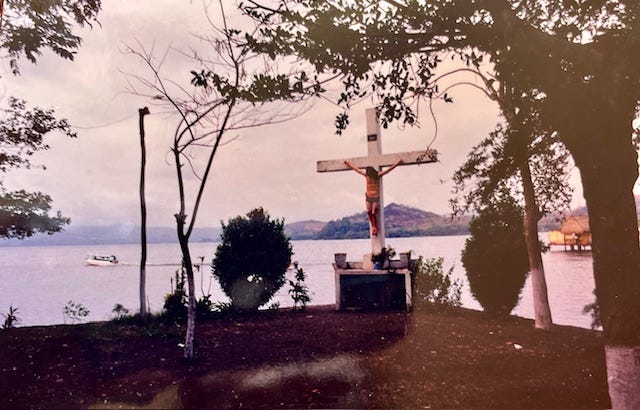
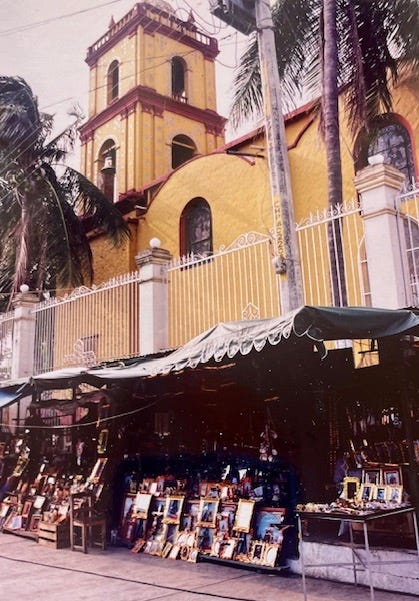
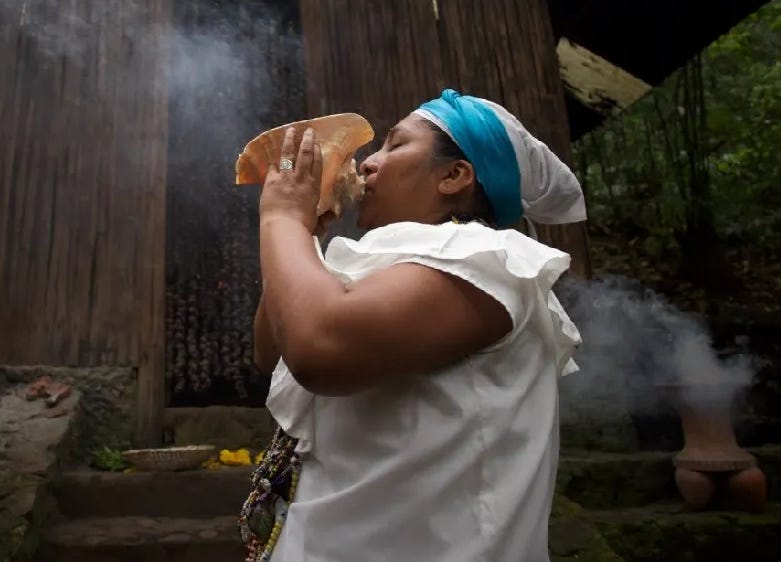
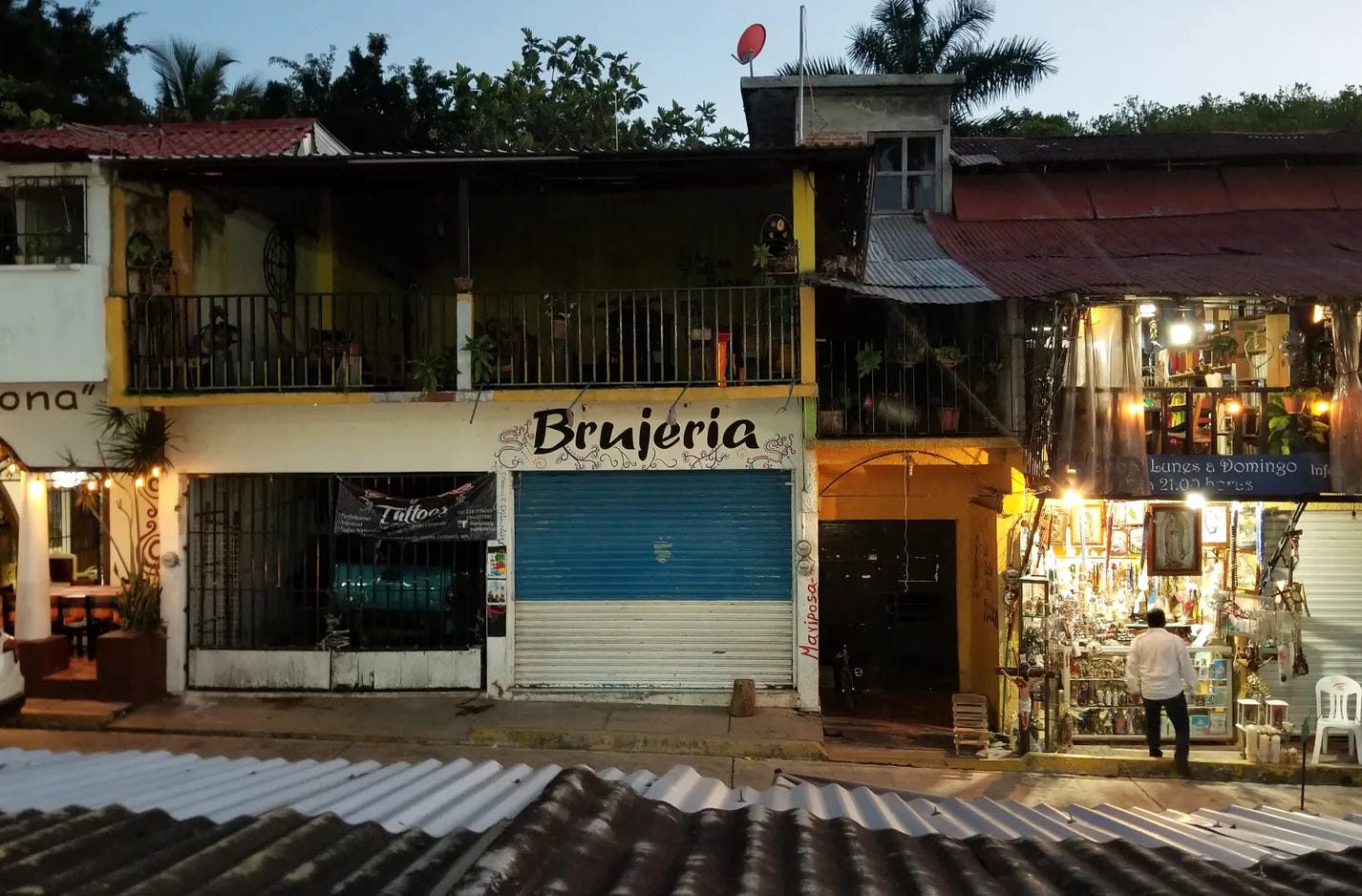
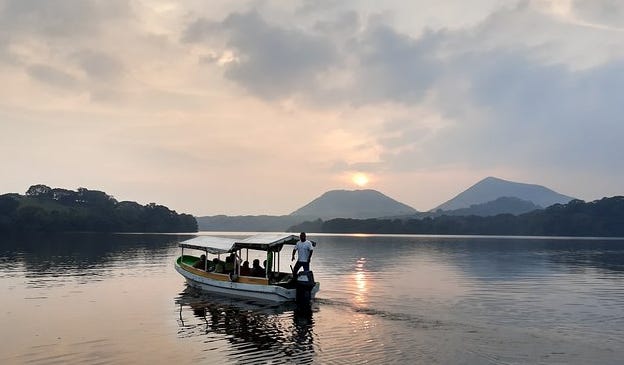
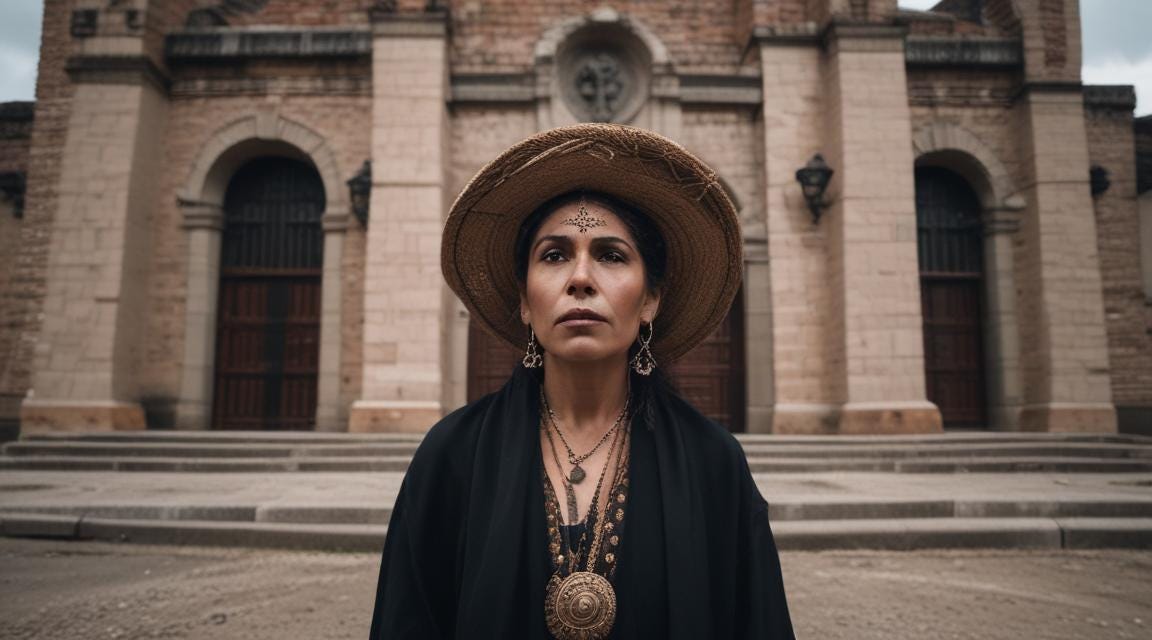


The pretending-not-to-understand trick is universal and works everywhere in the world. But I would have enjoyed reading what the diminutive sorceress had in store for you!
wow, super fascinating! that picture in front of the church in Catemaco is awesome